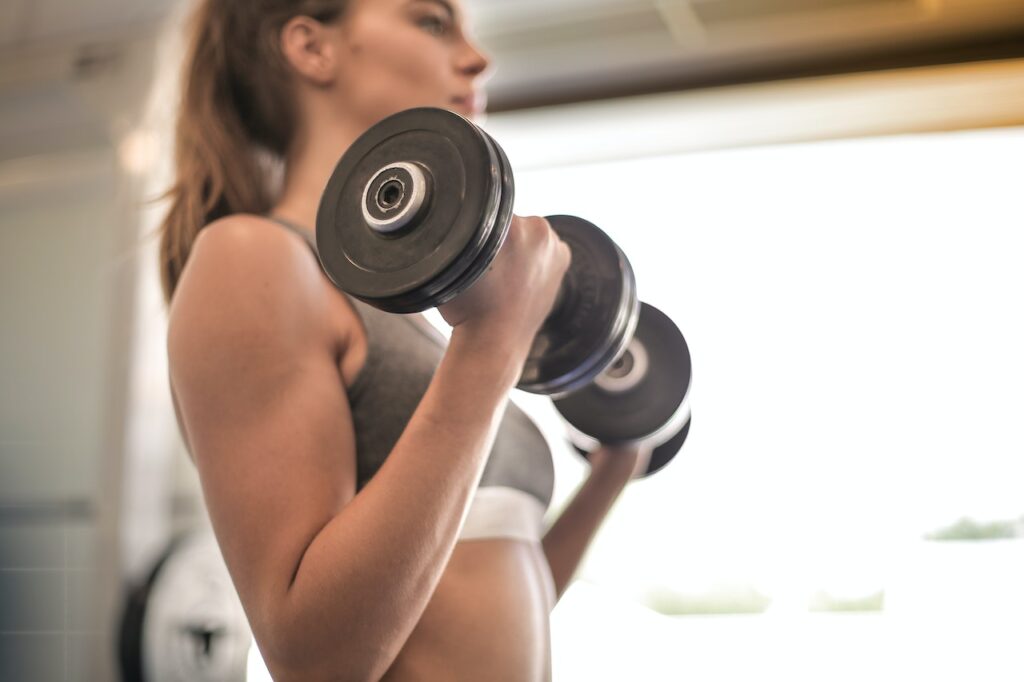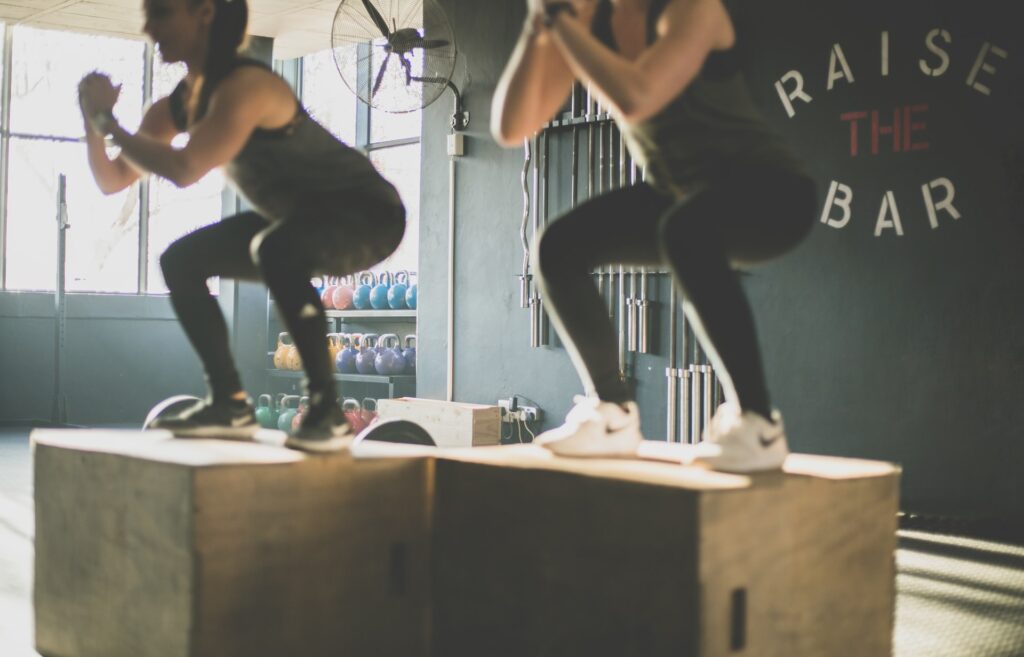Squats help develop leg strength, core strength and muscle stabilisation. It is one of the most basic exercises for building lower body power and stability. If you want to enhance or spice up your squat exercises, try doing goblet squats.
A goblet squat is an alternative squat movement characterised by performing a squat while holding a free weight. Learn more about how to do goblet squats correctly, mistakes to avoid, their benefits and answers to some FAQs.
How to Do a Goblet Squat The Right Way
You can do a goblet squat by using a kettlebell or a dumbbell. Your only drawbacks are the weights available and your flexibility and strength.
Where to Find the Best Weights
You can always find reviews of the best weights on the web. Since there are many options you will see when you Google dumbbells or kettlebells, you can narrow them down by knowing precisely what you need. When buying either dumbbells or kettles, consider their quality, user reviews, the right weight for your level and how much you are willing to spend.
Kettlebell Goblet Squat
Always begin with a lightweight kettlebell. Performing squats with a kettlebell is an excellent way to do a squat because it forces you into proper form.
- Grab the kettlebell with both hands and place your hands on the base of the bell. Make sure that the kettlebell is near your chest throughout the movement.
- Keep your knees aligned in the direction of your toes.
- Take a deep breath and begin to squat. Sit back in your hips and keep your torso straight and your core tight.
- Touch your elbows to your knees if you are flexible enough. Don’t force it if you can’t because it may cause you to lose your form.
- Get back to the starting position. Ensure that you keep your feet flat on the ground throughout the movement. Never try to lift your heels when lowering your hips.
- Start with two to three sets of ten to fifteen repetitions based on your fitness level and specific training objectives.
- Rest for half a minute to a full minute after every set.
Dumbbell Goblet Squat
Begin with a light dumbbell until you are comfortable with the movement. Apply the same steps from the kettlebell goblet squat.

The Benefits of Goblet Squats
Goblet squats come with a ton of benefits that support the entire body. Below are some of the gains you can expect when doing this exercise.
1. Improves Jumping Performance
A study shows that doing squats with added weight, like holding a dumbbell or kettlebell in a goblet squat, can improve jumping performance. Goblet squats can work the muscle groups in the glutes and quads, which are responsible for allowing you to jump effectively.
2. Prevents Exercise injury
One of the benefits of a goblet squat is that it helps improve your squat form. It allows you to perform proper movement and form when doing squats, thus preventing exercise injury.
3. Prevents Knee Pain
Goblet squats help strengthen muscles that support the knee joint, which protects the knee from pain when squatting.
4. Increased Core Activation
Since you are carrying the weight in front of your body, your core needs to activate harder than the regular back squat to maintain the movement.
5. Flexible Equipment Options
It is called a goblet squat because it looks like you are holding a goblet. If you do not have a dumbbell or kettlebell, you can use any equipment that lets you carry it with both hands near your chest.
6. Increased Range of Motion
Holding the dumbbell or kettlebell at chest height while squatting forces you to move through a full range of movement. It causes you to move your weight back onto the heels more. The lower you squat, the more strength you produce in your glutes.
Goblet Squat Variations
You can do the following goblet squat variations for more challenging and engaging goblet squats.
• Heel-Elevated Goblet Squat
Set two low bumper plates and elevate your heels onto the plates with your toes touching the floor. Grab your kettle at chest height and perform a squat. Your support stand is now divided between the floor and the plates. So make sure to carry on pushing through your feet.
• Pause-Goblet Squat
Perform the pause goblet squats by adding a controlled pause to the base of the squat. You can merge these squats with heel elevations, tempos or close stance variations. These variations can help in enhancing concentric strengths and address technique mistakes.
• Close-Stance Goblet Squat
The close-stance goblet variation has the legs positioned close together. This squat is not recommended for beginners who cannot squat correctly or for people with knee, hip or ankle problems. This variation challenges the quadriceps more than the glute muscles.
Goblet Squat Alternatives
Here are some alternatives to goblet squats that you can try if you want to tweak the workouts to aim for more or target different muscles.
• Sandbag Front Squat
To perform a sandbag squat, stand with your feet wide apart, holding a sandbag across your chest. Do not arch your back while you push your hips back and lean down your knees to drop your body until your thighs are parallel to the ground. Then, straighten your hips and knees to move up to the starting position.
This alternative squat targets hip flexors, glutes, quadriceps, hamstrings, and calves.
• Zercher Squat
The Zercher Squat challenges and targets the muscles throughout your posterior chain, which includes your glutes, lower back and hamstrings, whilst highlighting the quadriceps on your front legs. You should hold the barbell in the crooks of the elbows instead of on the front or back rack when performing a Zercher squat.
• Barbell Front Squat
The barbell front squat targets building lower body muscle groups. Start with the barbell across the side of your front shoulders, place your fingertips below the barbell just outside your shoulders, and then move your elbows up. Keep your chest up while engaging your core, and then perform a squat until your thighs are parallel to the floor. Then straighten your hips and knees to move up to the starting position.
Common Mistakes to Avoid
Though a goblet squat is safe for all fitness levels, there are some things to keep in mind to avoid common mistakes when performing a goblet squat. Take note of the items below to prevent injuries.
1. Knees Falling In and Out
Knees falling in and out is a common mistake for any squat. This movement can cause knee injury. Always align your knees in the same direction as your toes to avoid this common mistake.
2. Torso Doesn’t Remain Upright
This happens when you lack core strength and flexibility in your ankles. You must always engage your core and ensure that the weight is always close to your chest to avoid this mistake.
3. Rising Up on Your Toes
Rising on your toes when doing squats is a common mistake when performing any lower-body exercise. Always make sure to balance your weight evenly across your feet.
4. Half-Squatting
Doing a half-squat will never be as effective as performing a goblet squat with a full range of movement. The ideal goblet squat is to squat down until your hip joints go below your knee joints without hunching your back.
5. Resting the Weight on Your Body
You should suspend the weight you are using in space with your arms. By holding the implement upward, you are challenging your core and upper back, making the goblet squat an excellent total body stimulus.
6. Muscles Worked By the Goblet Squat
A goblet squat targets all the major muscle groups of the lower body. The primary muscles worked in this type of squat are your glutes, adductors and quads. It also works on your calves, lower back, and core muscles.

Final Thoughts
A goblet squat is a safe and effective exercise for all fitness levels. It is an excellent addition to your fitness routine, especially if you want to enhance your squat workouts. It provides many benefits and targets significant muscles in your lower body. Just be sure to avoid common mistakes when doing this exercise to prevent injury.
Related Questions
1. Who should do the goblet squat?
Goblet squats are safe for all fitness levels. This means that even beginners can do it. Just make sure to use a lighter weight that you are comfortable holding until you get the hang of it without sacrificing proper form.
2. How deep should I squat?
The safest and most effective squat technique is to squat below parallel. Your hips should go down below your knees during the squat movement.
- How Long Should You Stay in a Sauna Safely? - 20 January 2024
- Boost Post-Workout Recovery: Benefits of Using a Sauna for Recovery - 19 January 2024
- Discover the Health Benefits of a Low EMF Infrared Sauna - 19 January 2024
